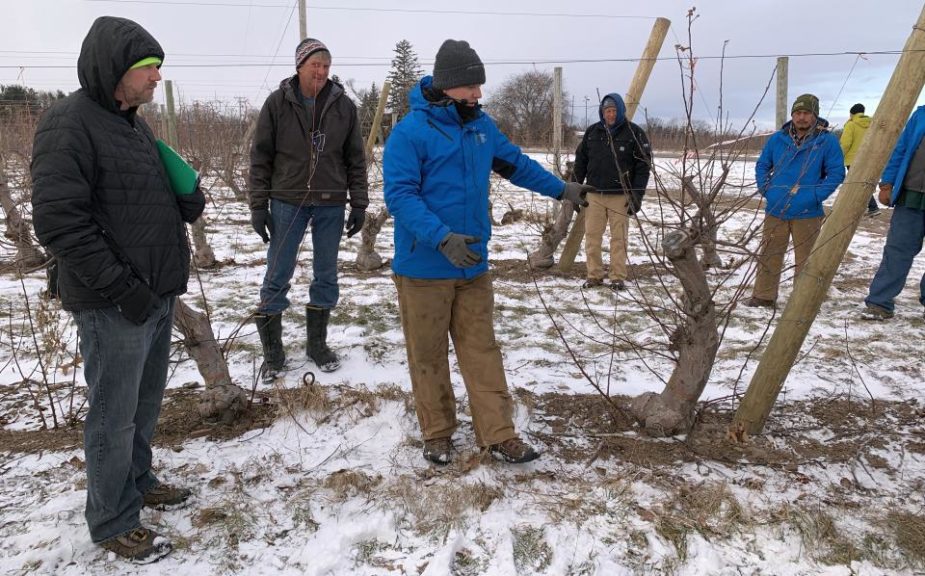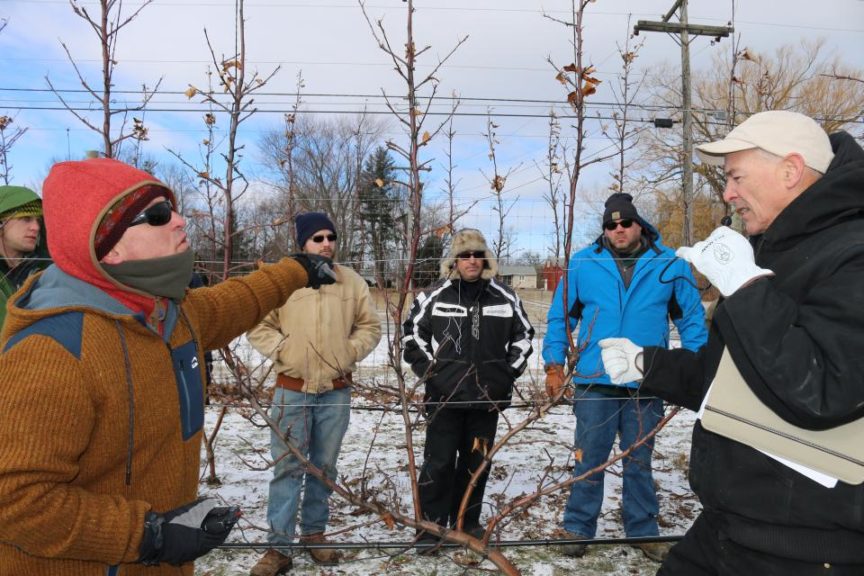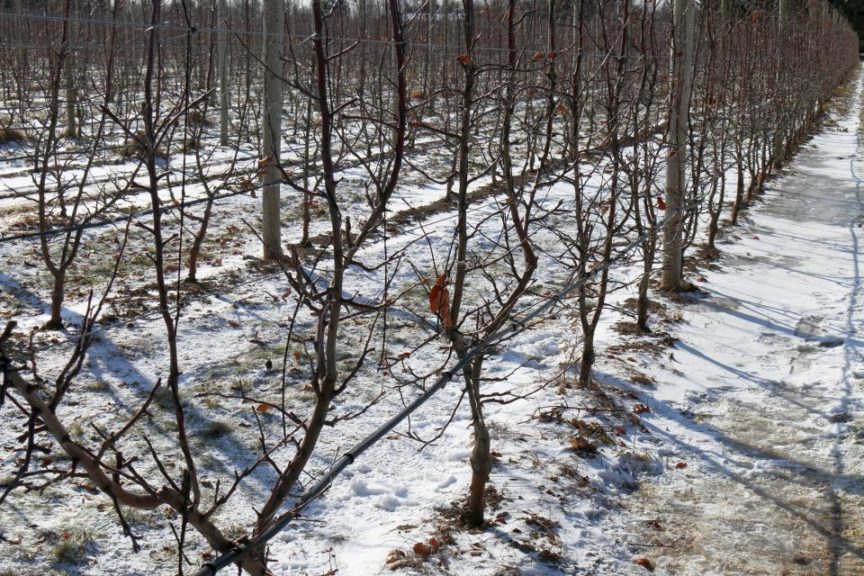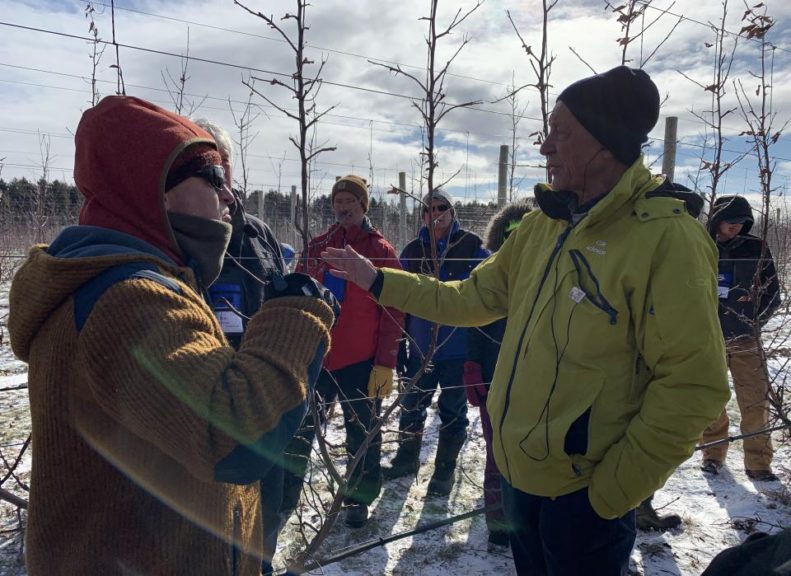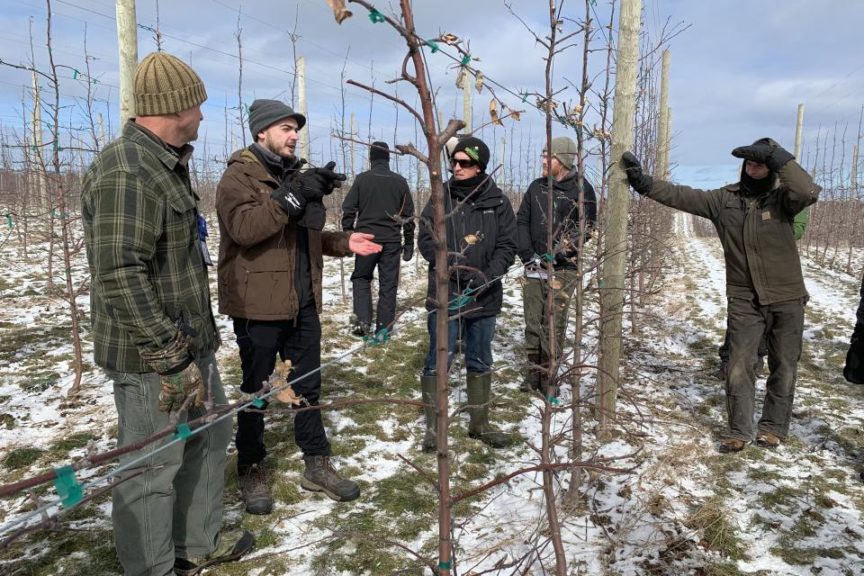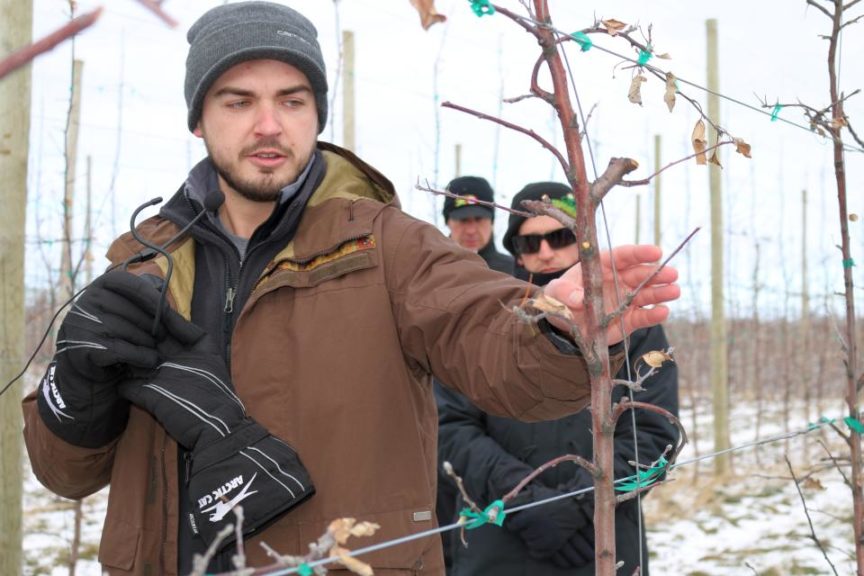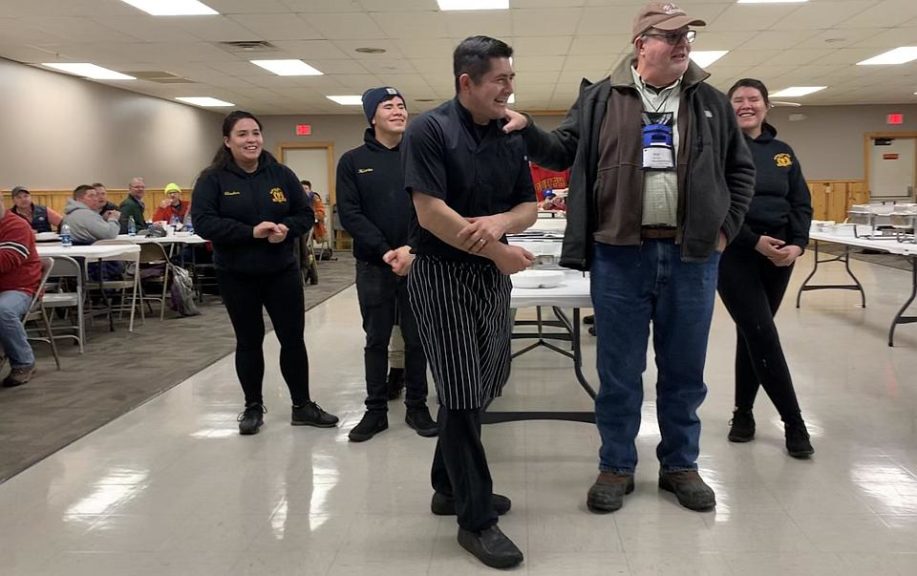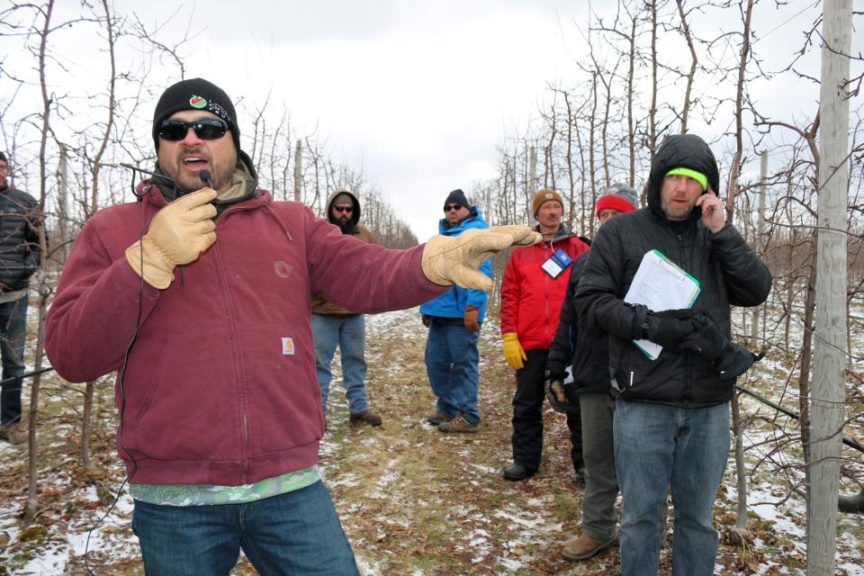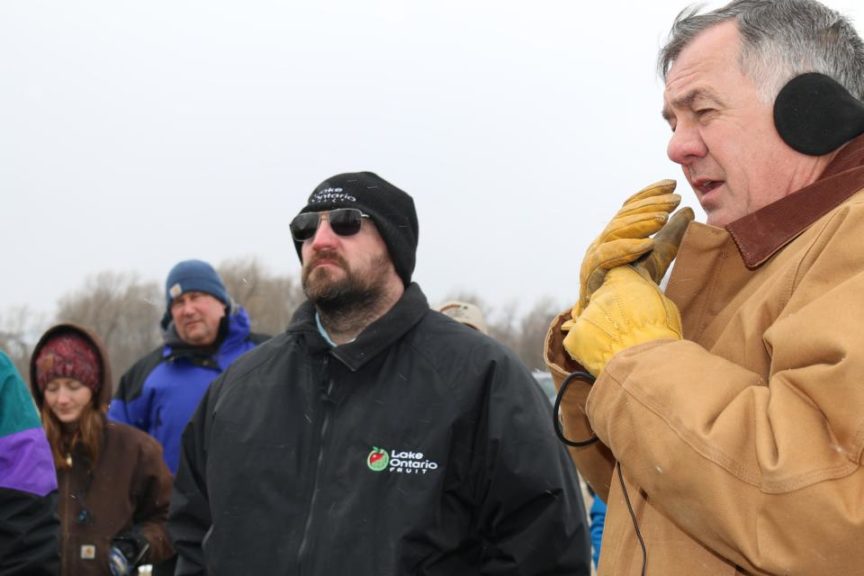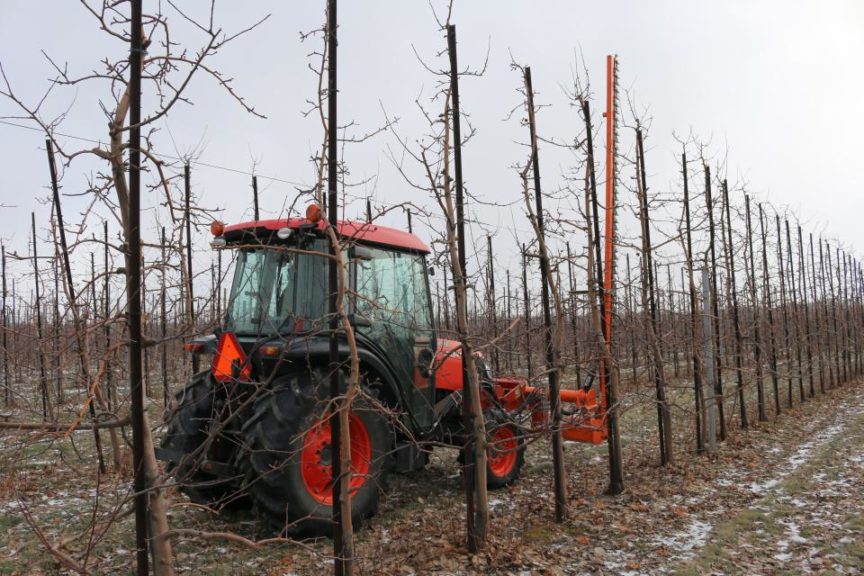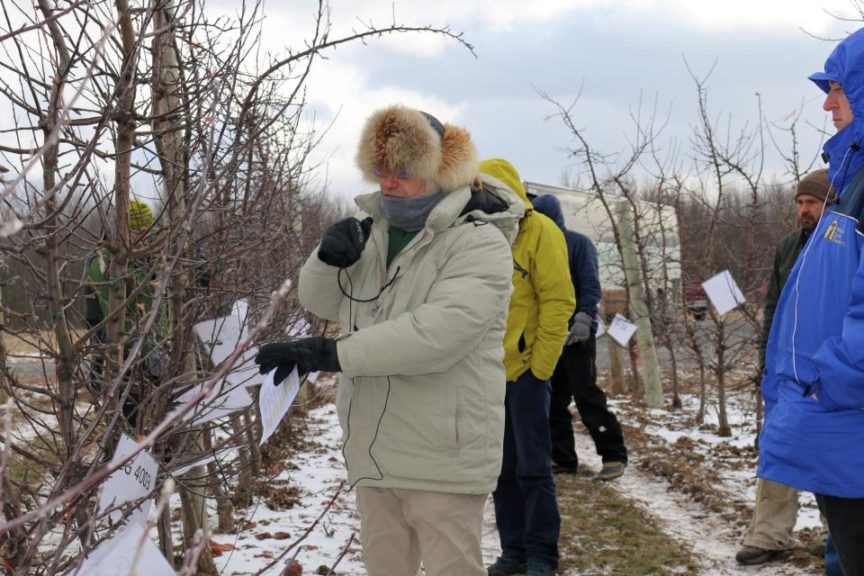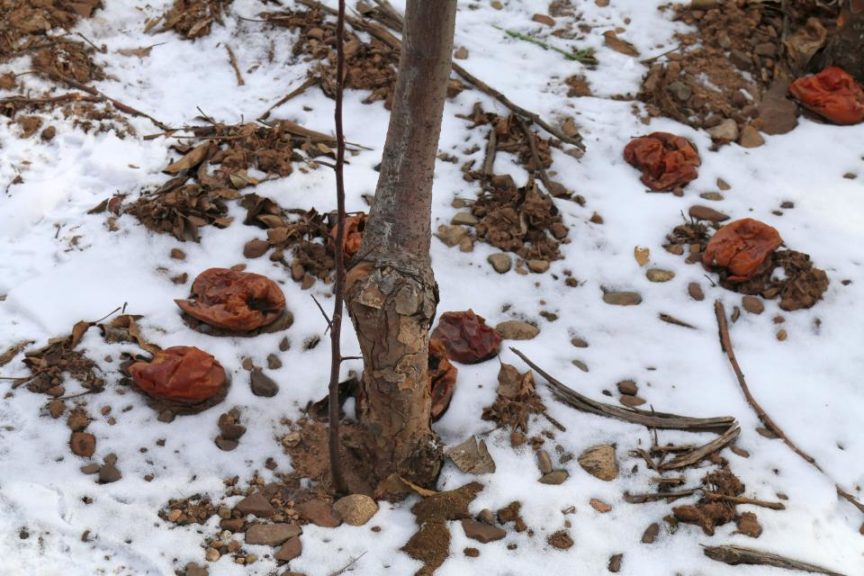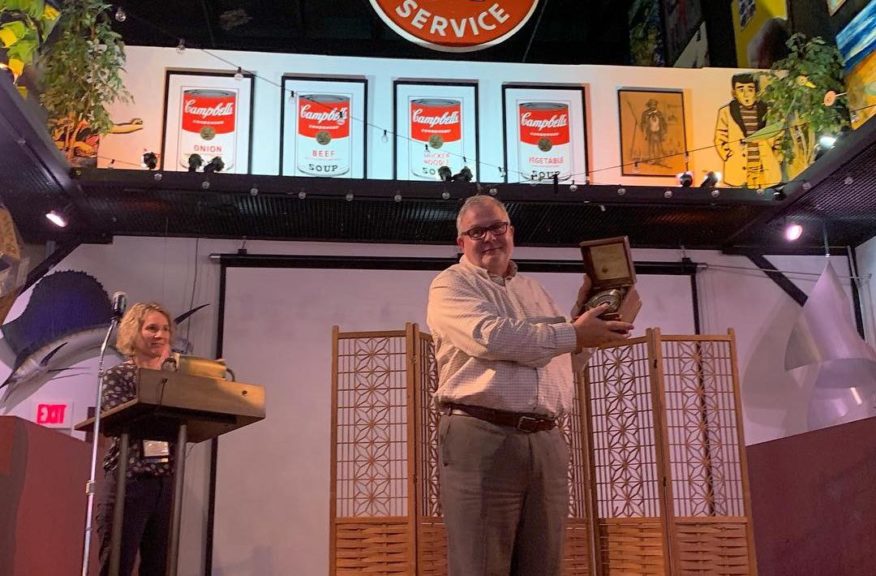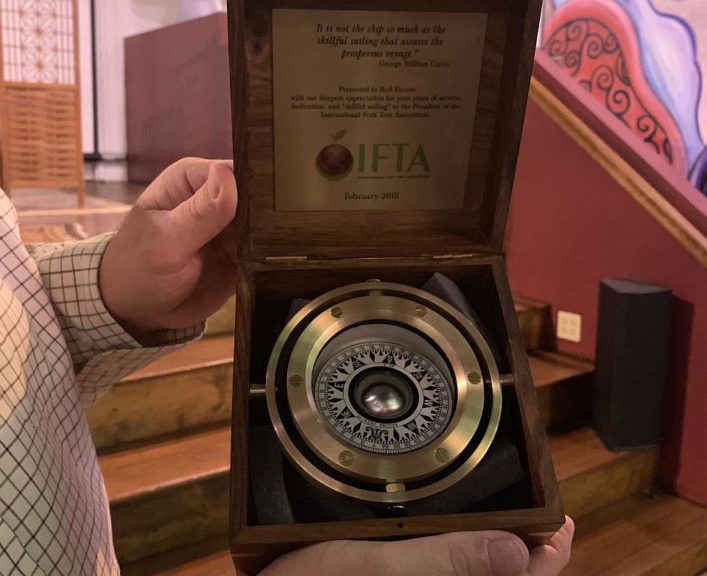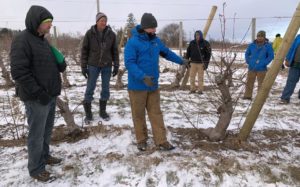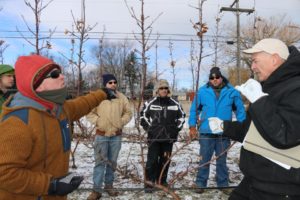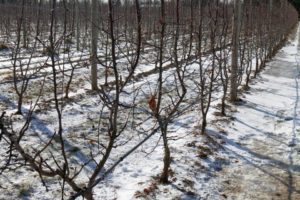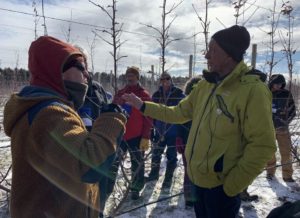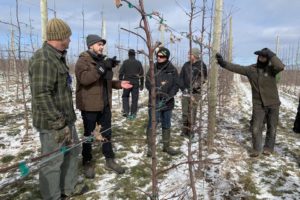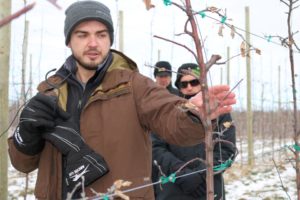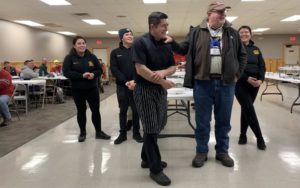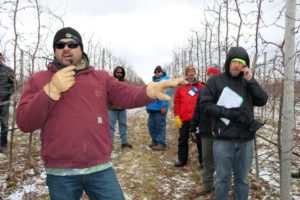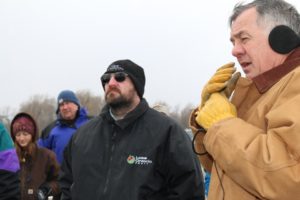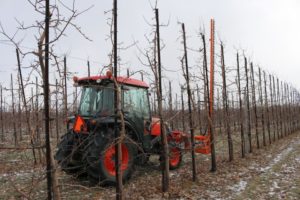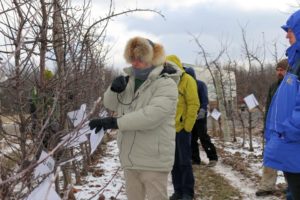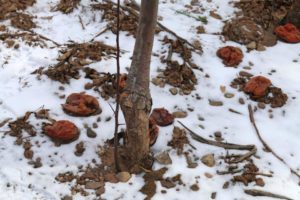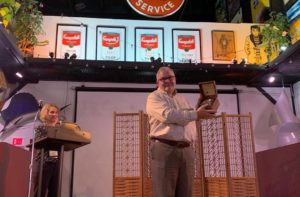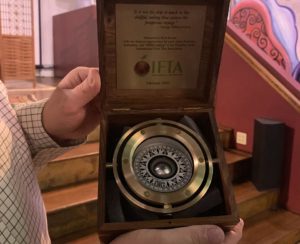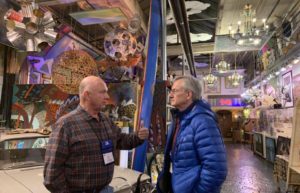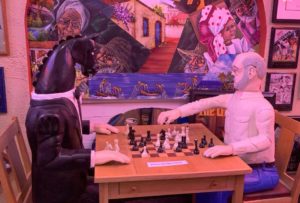On-Farm Experiments Fruitful for New York Apple Growers
It was not too long ago that International Fruit Tree Association (IFTA) tourgoers were in western New York when the 2016 IFTA Summer Tour rolled through. Mechanization, hedging, fruiting walls, and rootstocks were among the topics talked about, all with an eye to the future. This time around, when the IFTA conference visited western New York orchards, it’s easy to see where New York apple industry has been and where it’s going.
Orchard tours were held on the second and fourth days of the conference. The first day of tours took visitors to orchards west of Rochester and the second day of tours took visitors to the east.
On-Farm Experiments
Growers are taking risks, and nowhere is that better seen than at Orchard Dale Fruit Farm in Waterport, NY. Eighth-generation grower Bobby Brown talked about the trials and errors he and his family faced with beaver grafting and side grafting. Beaver grafts, or notching, are deep angled cuts in the trunk below the nursing limbs to give a better spacing to the new leaders.
“This is more of a large trial,” Brown says.
Side grafts on B.9 were completed in 2016 with ‘Minneiska’ grown as a triple leader. Beaver grafts on M.9 rootstocks on ‘Rosy Gala’ and ‘Honeycrisp.’ The idea for these plantings are to create a fruiting wall.
“It’s a slow learning curve how to figure out a larger graft,” he says. “It’s not pretty, but you just marry it with the tree.”
Nurse limbs are essential with beaver grafts. Without them you can risk flooding out the graft. Brown said winter damage hit the beaver grafts hard, with about 30% loses in first year. But, his side grafts had about 70% take.
“You kind of make it up as you go,” he says.
Brown’s family has about 15 acres under irrigation and that Brown says, helps keep the trees healthy, helps establish bud return, and aids in good tree growth in the first three years.
Multileader trees at Excelsior Farms in Kent, NY, were first planted in 2015. What’s important to remember is that while there may be a certain number of trees planted, the number of leaders explode exponentially.
Grower Roger Bannister says he followed the advice of Alberto Dorigoni — from the Istituto Agrario di San Michele all’Adige in Italy’s South Tyrol province — on supporting his GPS-planted trees approximately 5 feet apart, with leaders every 18 inches apart. Row spacing is about 8.5 feet wide.
Bannister is the first grower to try multileader in western New York.
“When you take challenge on alone, you really admire what you’ve done,” he says.
Pruning in mid-June until mid-summer for Bannister is “four fingers,” which is leaving wood that’s just about four fingers long.
“When they’re fruitful, they’re set,” he says.
Bannister also uses Promalin (Valent BioSciences) on the top four inches of the trees starting at the end of June and three times during the summer. He says this helps to even out the growth of the top layer.
One thing Bannister cautions growers is that it’s “Very important to get things done when they need to get done.”
For example, Bannister says in his system branches need to be tied down, but if they’re not done at the proper time, the response is different.
In his plantings, ‘Pazazz’ is on Mark, ‘Honeycrisp’ is on M.26. He says about 25% of his canopy is developed and got about 356 bushels to the acre with “Pazazz’ and about 238 bushels per acre with ‘Honeycrisp.’
His goal is to have about 1,600 bushels per acre productivity. While he’s experimented with seven different varieties and six leaders per tree, Bannister says “I like four leaders.” He suffered some loses in the seven-variety trial, and he says that although you may lose a few trees, each tree is several leaders.
While at Kast Farms in Albion, NY, Gennaro Fazio, Plant Geneticist with USDA-ARS, gave growers a rundown of Geneva and other rootstocks in a trial with ‘Red Chief Spur’ as the scion. Fazio cautioned growers to go in whole-hog with a new rootstock.
“My recommendation if you have an inkling is buy a few trees and put on your farm in a representative place to find out where and specifically if the rootstock will work,” he says. “You really need to gauge what the rootstock potential is before you can make a decision.”
Fazio says G.890 doesn’t have fibrous roots, so that particular rootstock is best suited for sandy soils. He’s also optimistic about another new release (G.4004), which is productive. He’s currently working with the Bittner family on an organic ‘Honeycrisp’ trial. G.4003 boasts the highest amount of calcium delivered to the tree, which may offset some bitter pit in ‘Honeycrisp.’
Fazio says, above all, spacing is critical for each individual rootstock. Otherwise, growers risk losing productivity.
“Don’t plant B.118 anymore,” he says. “It produces a lot of wood but not too many apples.”
Maximizing Productivity
Gone are the days when the benchmarks of production are bins to the acre. Growers in western New York are increasingly looking toward more detailed benchmarks of cost per acre for orchard tasks. Growers are now looking to incorporate mechanization into orchard tasks to boost workers’ productivity and improve on efficiencies.
When yields started to plateau for the Zingler family in Kendall, NY, both Mike and his son Jimmy knew they had to do something. After Jimmy attended an IFTA summer tour in Washington and saw Auvil Fruit Co.’s formal 2-D system, the Zinglers thought this might be the solution to give their 700-acre farm a boost.
The Zinglers grow in a hybrid 2-D vertical, formal system that is GPS planted for consistently. The goal is 92% to 94% packout, with about 1,600 to 2,000 bushels per acre. Tourgoers got a look at 11-by-3-foot planting of ‘Aztec Fuji’ on M.9-337. The first crop of this third-leaf ‘Aztec Fujis’ had a yield of 480 bushels per acre.
“You set your goals high,” Mike Zingler says.
This system was selected specifically to improve labor efficiency, increase yields and fruit quality, and make a move toward a system that could work for robotics in the future.
“This system is best to do all this,” Mike Zingler says.
Leaders are trained with twine, which is cost-effective and easy to install. While the training is more labor-intensive and may be more of an investment at the start, Jimmy Zingler says “after it’s established, there’s so many efficiencies” including ease of pruning. The 7-wire system leaves the bottom wire to allow workers to be able to pass through if needed. And, crews can pick from one side.
“I was never a fan of fencing people out of rows,” Mike Zingler explains. “Accessibility is a brick wall for me.”
Sandy Knoll Farms in Lyndonville, NY, boasts some of the tallest tall spindle trees in western New York. Height isn’t the remarkable part of the orchard, it’s that the orchard was converted from 3-D to a 2-D canopy.
“You can convert 3-D to 2-D,” Terence Robinson of Cornell University told the crowd. “Not every orchard is 2-foot-by-11.”
This conversion from 3-D to 2-D has helped get 68% better light interception in the ‘Gala’ planting on M.9. This planting is about 3.5-feet-by-14-feet, with about 888 trees per acre. Trees are mechanically hedged in this system, which is followed by with hand thinning. This move to hedging was to increase labor productivity and to try to get trimming costs to about $275 an acre. The team at Sandy Knoll, which includes Patrick Woodworth and Luis Garza, are looking for about 118 apples per tree, with the help of counting buds.
“By managing bud counts our thinning is not a worry,” Garza says, noting workers have an easier time hand thinning.
Jose Iniguez and Jason Woodworth of Lamont Fruit Farm in Waterport, NY, also uses bud counting to pinpoint their orchard production. This, with the help of Poliana Francescatto, previously of Cornell University and now of Valent BioSciences, was achieved with bloom thinning trials.
“Everything we do is to set up the canopy,” Woodworth says.
Woodworth and Iniguez hedge their orchards and were hitting around 70 apples per tree. But, they wondered what would happen if they were more in the 62 to 63 apples range, and what that would do to the operation’s bottom line.
With Francescatto’s encouragement, Woodworth, Iniguez, and partner Rod Farrow were looking to reduce the cost of thinning while increasing quality in their 2011 planting of ‘Gala’ on B.9, spaced about 11-feet-by-2-feet. So, they set up chemical bloom thinning trials using ATS (ammonium thiosulfate). They start chemically thinning early, they were able to consistently able to get to 88s in size at harvest, which is ideal for ‘Gala.’
“We leave more apples on the tree, it’s more precise and we get better quality. The cost of production hasn’t changed much,” Woodworth saying it used to cost about $375 an acre to thin and it’s now $425. But, Woodworth quickly points out “the cost to start earlier has led to more dollars and cents on the other end [at harvest]. It’s the same 70 apples, just different growing conditions.
Kind Words for the Next Generation
“It’s so vital that we involve young people,” Mike Zingler says at the end of his family’s tour stop. “If you’ve got a young person, I urge you to give them a chance.”
Zingler, first-generation grower, says it’s vital that the industry takes a chance on this next generation of growers, just as someone took a chance on him and it comes full circle as his son, Jimmy, in turn has help further the family’s operation.
“He’s broth so much to the business,” Mike Zingler says. “It opens up the world of new ideas.”
“If you’re young, show ’em what you can do,” he said.





